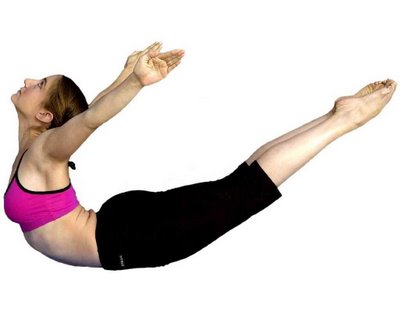
The lumbar spine is an extremely important part of our body. It supports every movement that an individual makes. The movement may be as simple as sitting, crawling or even walking. Strengthening the muscles in the lumbar region and keeping the spine lubricated with the help of yoga helps in your later life. Yoga helps in prevention of injuries like compression fractures and bulging discs. Starting yoga in the younger years helps in avoiding this problem. You may be encountering the problem later but then you cannot go back and change the situation. Therefore, yoga should be practiced for keeping the spine supple and also for supporting the skeletal muscles for making you strong.
Locust pose or Salambhasana
Locust pose is also known as baby back bend pose. This pose is extremely helpful for individuals for strengthening their lumbar spine as well as the muscles of the thigh and the abdomen. For doing this pose, the individual must lie down on a mat and put the arms by his sides and the palms must face upward. The head should be raised and the chest and legs should be kept off the floor by a few inches. The palms should continue to face upwards. The hips should only be left with contact with the floor by the individual. If an individual experiences pain in this position, he should immediately release himself. Otherwise, he may cause harm to his muscles. Instead he should modify the pose. This can be done by raising the legs one at a time with the other leg resting on the floor. This pose should be held till you slowly count up to thirty.
Upward facing dog pose or Adho mukha svanasana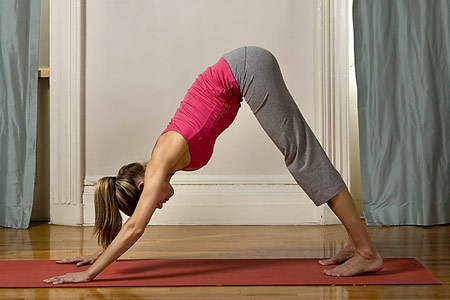
The upward facing dog pose helps in maintaining the good health of the spine and gives immense relief from back and sciatic pain in individuals. For doing this pose, the individual should lie down on a mat. The hands should be kept by the sides of the person and flatly on the mat. The hands should be next to the tops of your own shoulders. The legs should be kept straight and the top of the feet should be kept against the mat. The individual should next push up onto his hands as his back forms a nice, deep back bend. The individual should push up and back as far as his body allows until his hips are on the floor. The pose should be held till you count up to thirty. The pose should be repeated once in the same direction. The pose should be repeated on the other side in the same manner for effective results.
Reclining knee twist or Supta Matsyendrasana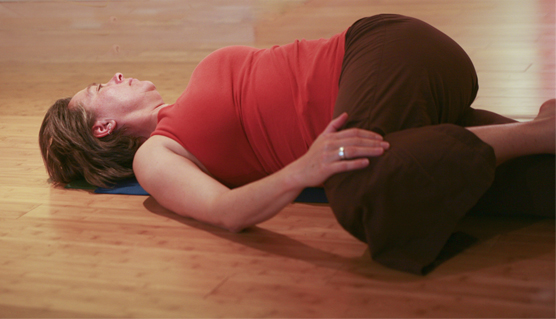
The reclining knee twist is a good exercise for amateurs who want to strengthen their lumbar muscles and increase the strength in this region of their body. For this pose, the individual should be in a face-up position on the mat. The hands should be by his side with the palms down. The knees should be bent and the feet should be kept flat on the floor. The arms should be raised to shoulder height while keeping them flat on the floor. The knees should be brought together and allowed to fall on one side and turning your head in the other side. The pose should be maintained till an individual slowly counts and reaches thirty. The individual should relax himself and then practice it on the other side of his body.
Sphinx pose or Bhujanngasana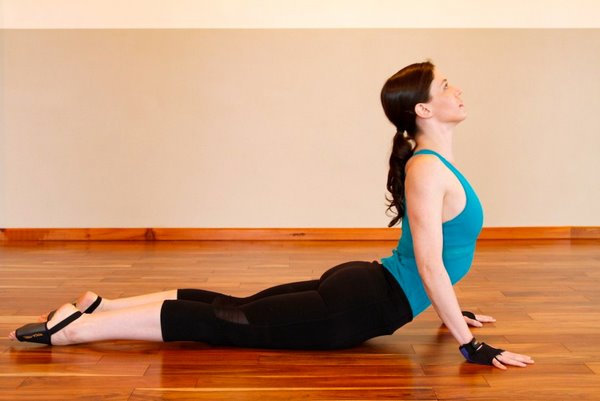
The sphinx pose helps in strengthening the lumbar muscles. It also helps in strengthening the legs and makes your body flexible. For this pose, the person should lie on the mat. The upper body should be proper up on his fore arms and the elbows should be directly below his shoulders. The forearms should be kept parallel and the palms should face down. The toes should be extended towards the wall behind the person so that the tops of the feet of the person rest on the mat. Next you must try and engage your quadriceps. The person should try to keep his gluts relaxed so as not to bring tension to his lower back. The belly should be next lifted up and should support the lumbar spine. The pose should be held for five breaths and then released.
Forward bend or Uttanasana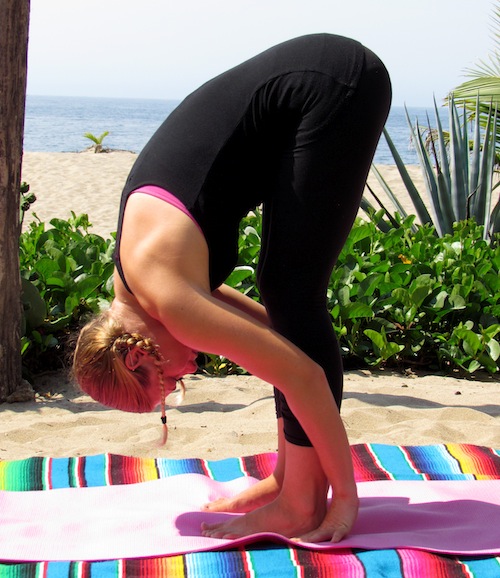
This pose is excellent for improving the posture of an individual, stretching the entire spine and for increasing the flexibility of the lumbar region. The person should sit on the back of the mat with the legs fully extended. The knees should be kept extended throughout the course of the exercise. The quadriceps should be involved so that the legs can be stabilized. The arms should be crossed over the chest of the individual and the opposite arms should be placed in the armpits. The head should be brought forward and the chin should be dropped to the chin to the chest as the person rounds the upper, middle and lower back. The hip flexor muscles should be activated to pull the upper body forward toward the thighs of the individual. The person should gently extend to reach the limit of the comfortable range of motion and then hold the pose for sometime before relaxing.
Dolphin plank pose or Makara adho mukha svanasana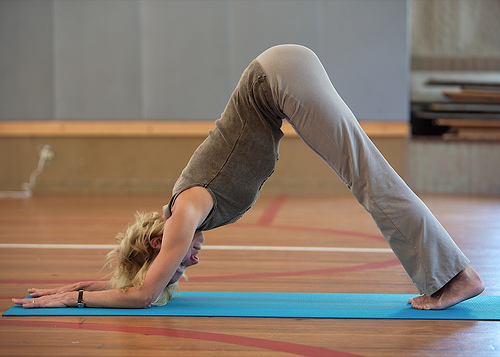
This pose helps in stabilizing the spine. The person should lie on his stomach with the forearms on the floor, the palms flat on the floor and the elbows in line with his shoulders. The person should rise up on his toes so that the body is several inches above the floor. The body weight should rest on the forearms and toes. The abs should be tightened, the spine must be kept straight and the eyes should be kept on the floor. It should be held for ten seconds before releasing.
Easy pose or Sukhasana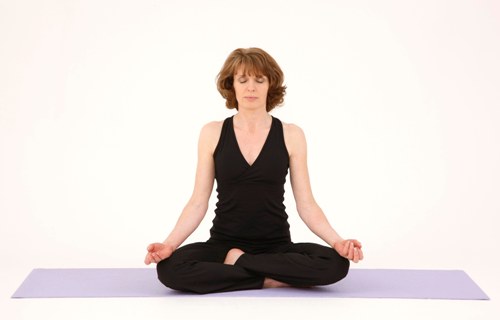
This pose helps to keep the spine in proper alignment. The person should sit on the floor in a cross legged position with the backs of the wrist resting on his knees. The torso should be kept centered and the shoulders must be in line with the hips, the ears with shoulders. The head should be parallel to the floor. After holding this pose for twenty seconds, the person should release himself.








